A Contemporary Cuba Reader
A Contemporary Cuba Reader
The Revolution under Ral Castro
Second Edition
Edited by Philip Brenner, Marguerite Rose Jimnez,
John M. Kirk, and William M. LeoGrande
ROWMAN & LITTLEFIELD
Lanham Boulder New York London
Published by Rowman & Littlefield
A wholly owned subsidiary of The Rowman & Littlefield Publishing Group, Inc.
4501 Forbes Boulevard, Suite 200, Lanham, Maryland 20706
www.rowman.com
16 Carlisle Street, London W1D 3BT, United Kingdom
Copyright 2015 by Rowman & Littlefield
First edition 2007.
All rights reserved. No part of this book may be reproduced in any form or by any electronic or mechanical means, including information storage and retrieval systems, without written permission from the publisher, except by a reviewer who may quote passages in a review.
British Library Cataloguing in Publication Information Available
Library of Congress Cataloging-in-Publication Data
A contemporary Cuba reader : the revolution under Ral Castro / edited by Philip Brenner, Marguerite Rose Jimnez, John M. Kirk, and William M. LeoGrande.Second edition.
pages cm
Includes bibliographical references and index.
ISBN 978-1-4422-3098-9 (cloth : alk. paper)ISBN 978-1-4422-3099-6 (pbk. : alk. paper)ISBN 978-1-4422-3100-9 (electronic)
1. CubaHistory1990- I. Brenner, Philip, editor of compilation, author. II. Jimnez, Marguerite Rose, 1982 editor of compilation, author. III. Kirk, John M., 1951 editor of compilation, author. IV. LeoGrande, William M., editor of compilation, author.
F1788.C67 2014
972.9107dc23
2014008031
 TM The paper used in this publication meets the minimum requirements of American National Standard for Information Sciences Permanence of Paper for Printed Library Materials, ANSI/NISO Z39.48-1992.
TM The paper used in this publication meets the minimum requirements of American National Standard for Information Sciences Permanence of Paper for Printed Library Materials, ANSI/NISO Z39.48-1992.
Printed in the United States of America
List of Tables
Preface
On July 31, 2006, the Cuban government announced that President Fidel Castro Ruz had relinquished temporarily all of his government and party responsibilities. Nearly dead from complications due to abdominal surgery, the iconic Cuban leader had designated his younger brother, Ral Castro Ruz, to serve as provisional president, head of the Cuban Communist Party, and commander in chief of the armed forces. Over the next eighteen months as the elder Castro recuperated but lacked the physical ability to resume any of his previous official roles, it became clear that a peaceful succession of power had occurred in Cuba.
This book examines the consequences of the succession by focusing both on the changes that have occurred since mid-2006 in Cubas economics, politics, social relations, culture, and relations with other countries and on the continuities, especially how the country has attempted to maintain its social safety net, guarantee of good health care and education to everyone, and prestige among Third World nations as well as a tradition of collective responsibility and shared burden in the face of increasing individualism.
In assembling chapters for this edition of A Contemporary Cuba Reader, we faced the challenge that Cuba is a rapidly moving subject. To prevent this collection from becoming obsolete within months of publication, we commissioned a larger percentage of original chapters for this edition than we did for the first, asking authors to identify the dynamics of their subjects in order to provide readers with a sense of what drivers lie behind the process of change. Moreover, we have created for readers a continually updated website that includes data on Cubas demography and economy, information about current political events and political leaders in Cuba and Cubas international relations, and links to films, music, photos, and topical articles.
The first edition of A Contemporary Cuba Reader examined what President Fidel Castro declared in 1990 to be a Special Period in a Time of Peacea period of extreme hardship that led to a dramatic reversal in the quality of life for most people on the island. The collapse of the socialist trading bloc in 1989 and the subsequent breakup of the Soviet Union caused the Cuban economy to decline by nearly 30 percent in four years. The first edition described and analyzed both the myriad ways that Cubans had reinvented their Revolution during the Special Period and the way that some changes, such as the dual currency, contributed to undermining fundamental goals of the Revolution by increasing inequality and diminishing the value of education. The government still has not officially announced an end of the Special Period, but we would argue that by 2006 it was over, as the Cuban economy was again expanding and the worst years seemed past. In 2006, Cuba hosted the summit of the 116-nation Non-Aligned Movement, elevating Cuba once again to a position of Third World leadership. Cuban music and the arts were flourishing, and there was a new openness on the island in discussions about Cubas future.
Still, as Ral Castro took the baton from his brother, there was considerable uncertainty about the path he would take in leading the country. There was even the question of his own ability to replace Fidel, a giant whose charismatic relationship with Cubans had conferred legitimacy on his authority even in the worst times. Indeed, while there is little doubt that Fidel Castro played the central role in determining the character, the successes, and the failures of the Cuban Revolution, it had not been Castros Revolution. The calm that ensued after he stepped down suggested both that he was replaceable and that the Revolution he led had been forged by the Cuban people who continued to support its fundamental goals of national independence and social justice. As we highlight in the introduction to this book, contemporary Cubans carry with them the legacy of many prior generations who were determined to build a Cuba independent of foreign dominationwhether by Spain, the United States, or the Soviet Unionand at least since 1959 to foster an ethos of egalitarianism.
Ral Castro has thus sought to retain the wide-ranging social programs that have provided substantial benefits to the Cuban population while introducing a series of measures intended to modernize the economic structure and provide incentives to the growing self-employed sector. This has resulted in a radically new stage of the Cuban revolutionary process, significantly different from anything seen to dateyet with the same underpinnings of revolutionary society as found before. Although Ral Castros era is not over yethe has announced that he will serve as president until the end of his current term in 2018he has determined Cubas path clearly enough that we can ascribe the period since 2006 as the Revolution under his leadership.
Several people have assisted us as we worked on A Contemporary Cuba Reader. We thank Amy Ruddle, Kia Hall, Uri Lerner, and Alex DAgostino for their research assistance, and Will Pittinos for his work on the index. We have benefited from the advice and contributions given to us by numerous colleagues at American University, Dalhousie University, the University of Havana, and Cubas Instituto Superior de Relaciones Internacionales and from anonymous reviewers and students and faculty who have used the book. Officials at the U.S. Interests Section in Havana and the Cuban Interests Section in Washington, D.C., have facilitated our travel and research. Our families have been generous with their support and patience. All of the editors royalties from the sale of this book will be donated to MEDICC (Medical Education Cooperation with Cuba), a U.S. nonprofit organization working to enhance cooperation among U.S., Cuban, and global health communities. The second edition of



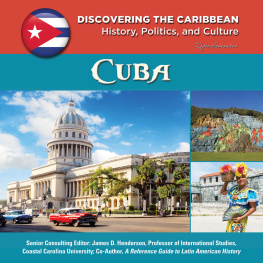

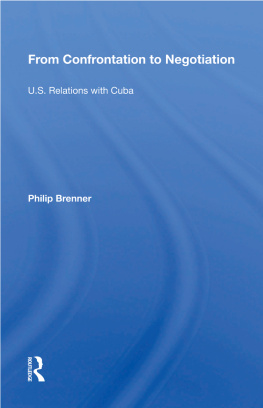


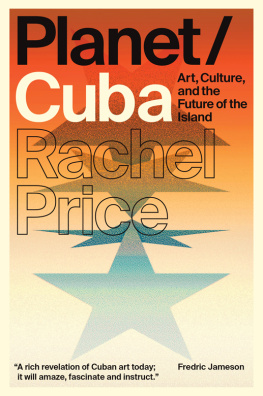
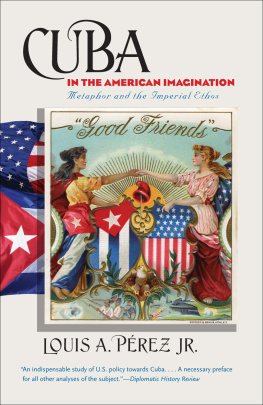

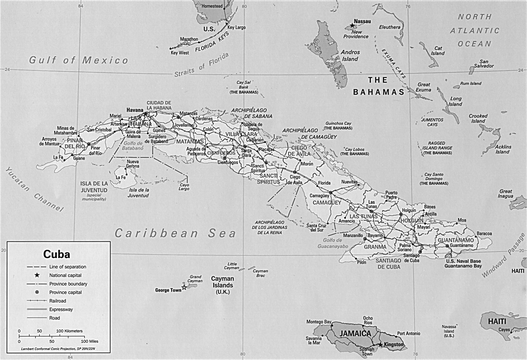
 TM The paper used in this publication meets the minimum requirements of American National Standard for Information Sciences Permanence of Paper for Printed Library Materials, ANSI/NISO Z39.48-1992.
TM The paper used in this publication meets the minimum requirements of American National Standard for Information Sciences Permanence of Paper for Printed Library Materials, ANSI/NISO Z39.48-1992.